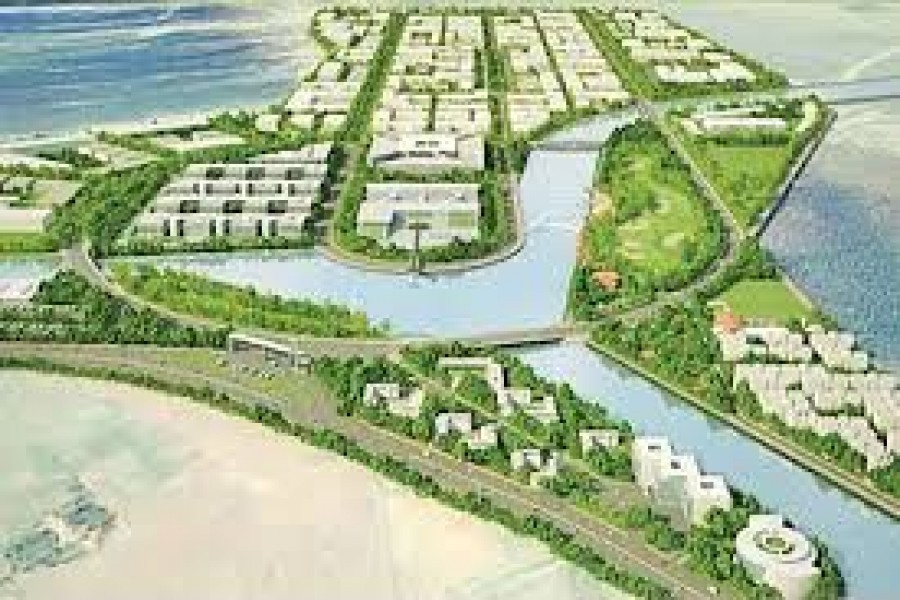Very prudently the government has adopted the policy of developing Special Economic Zones ((SEZs) ) across the country to tap potentials for productivity, and to create jobs for millions.
SEZs are now widely regarded as massive investment in industrial infrastructure to attract and facilitate foreign investment, integrate local firms into global value chains, promote export-oriented growth and generate employment. SEZs are an important instrument of socio-economic development. SEZs are widely deployed to kick-start industrial sectors and to promote technology transfer to local economies that can contribute to improving the overall investment environment, lowering transaction costs for FDI activities, improving the ease of doing business and streamlining administrative procedures, including the time required to set up operations. According to UNCTAD's estimate, there are now moiré than 4,800 SEZs worldwide.
Mandated by the Bangladesh Economic Zones Act, 2010, the Bangladesh Economic Zones Authority (BEZA) was officially instituted by the government on November 9, 2010 to establish economic zones in all potential areas in Bangladesh including backward and underdeveloped regions with a view to encouraging rapid economic development through increase and diversification of industry, employment, production and export. Several Export Processing Zones, or EPZs, have been established across Bangladesh since the 1980s, and the government planned to establish hundred new special economic zones. While many countries have set up special economic zones, China has been the most successful in using SEZ to attract foreign investment. In fact, China has even declared an entire province (Hainan) as an SEZ. The aims of the zones include: increased trade, increased investment, job creation and effective administration. To encourage businesses to set up in the zone, liberal policies are introduced. These policies are mostly related to investment, taxation, trading, quotas, customs and labour regulations.
In Bangladesh, since 1996, when the private EPZ Act was legislated by the then government, many initiatives got dwindled because of failures due to the lack of needed infrastructural support, administrative and regulatory competency. Added to these, inconsistencies in public policies, both fiscal and fiduciary, were also largely responsible for not materialising the plans. At this juncture, at the very beginning of new initiatives for establishing about 100 SEZs, it appears that infrastructural development of BEZA- backed public sector SEZs is progressing fairly well but the private SEZs are facing lots of difficulties. Clearly, these private SEZs need much attention not just in sprit but in reality also, particularly in the area of getting land, utility services (road and waterway connectivity, gas and electricity), fiscal and fiduciary facilities. These matters should not be left to the land administration and other concerned agencies and departments.
Despite the advantages and clear success cases, SEZs have a mixed record. The cost of investments in zone infrastructure (including land) and maintenance in many cases outweighs the benefits. Investors may take advantage of tax breaks without delivering substantial employment or export earnings. Many traditional SEZs were successful in attracting investment and creating employment in the short term but became uncompetitive when wages started to rise, or trade preferences disappeared.
The Special Economic Zones (SEZ) policy in Bangladesh requires adopting a more flexible approach to using the instruments and infrastructures of economic zones in the most effective way to leverage sources of comparative advantage of the growing economy, and to ensure flexibility to allow the zone activities to flourish. Most fundamentally, this will require a change in the mindset away from the traditional reliance on fiscal incentives, and wage restraint, and instead focusing on facilitating a more effective business environment to promote competitiveness, economic integration, innovation, and social and environmental sustainability.
Bangladesh government aims to encourage domestic and foreign investment in the SEZs by introducing more relaxed regulations in these areas but the scheme should not have a bumpy beginning. For Bangladesh, following ideas / models could be tried and tasted:
l Assembly of land parcels with secure title and development rights by the government for lease to private zone development groups;
l Build-operate-transfer approaches to on-site zone infrastructure and facilities with government guarantees and/or financial support;
l Contracting private management for government owned zones or lease of government owned assets by a private operator.
l Multi-year funding for SEZ infrastructure and related operator performance improvement initiatives may be in place tpwards accelerating growth of manufacturing and internationally traded service operations.
It is quite accepted that SEZs today operate in an ever more challenging environment. Due to the forthcoming Fourth Industrial Revolution (FIR), zones will need to rethink their competitive advantages, as the importance of traditional zoning advantages are eroding. At the same time, SEZs will need to pursue business activities in a more socially and environmentally responsible manner that advances the Sustainable Development Goals (SDGs).
Dr Muhammad Abdul Mazid is a former Secretary and former Chairman National Board
of Revenue.


